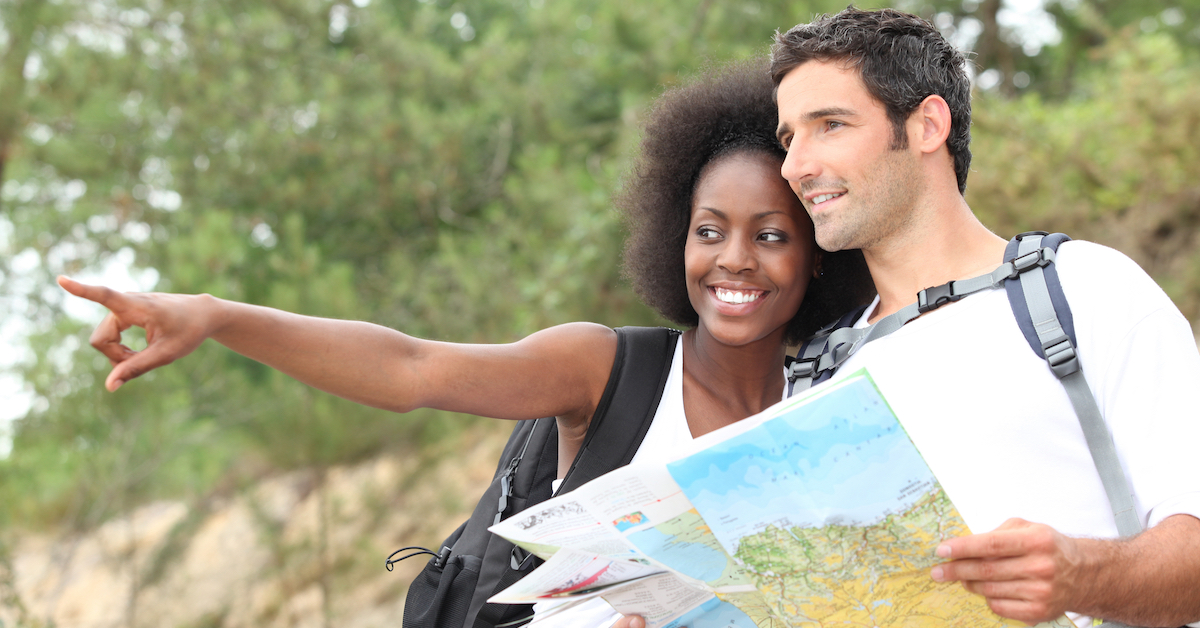What will you do today to bolster your brain?
Perhaps you’ll sit on the sofa solving crossword puzzles, or maybe you’ll be panting from jogging round the streets. Either one of these activities will give a leg up to your thinking abilities, but wouldn’t it be even more valuable if you could reap the brain-boosting benefits of both mental and physical activities at the same time?
Well, now you can. A unique sport combines athleticism with navigational skills to stimulate different areas of the brain, especially regions that have languished through lack of use due to age or a sedentary lifestyle.
What’s more, researchers believe this new approach could be an easy and effective way to stave off Alzheimer’s.
We left the hunter-gatherer era long ago. Food is now readily available and navigation skills are barely required to find our way to the local supermarket. Even if we do drive somewhere new, our trusted GPS will tell us exactly how to get there. All we do is type in an address.
Of course, our ancient ancestors didn’t have these advantages. They had to navigate through rugged terrain and actually hunt, catch, or gather their food. This required skills that stimulated parts of the brain that are underutilized in our modern world today.
Enter Orienteering
Researchers at McMaster University in Toronto hypothesized that the physical and cognitive demands of orienteering – which integrates exercise with navigation – may stimulate these underemployed brain areas and improve spatial memory.
Why is this important?
Because losing the ability to find one’s way is among the earliest symptoms of Alzheimer’s disease, affecting half of all afflicted individuals, even in the mildest stage of the disease.
Navigational Ability Wanes With Age
With both mild cognitive impairment (MCI) and Alzheimer’s disease, there’s a significant degeneration of the hippocampus – a key memory and learning area. This degeneration especially affects allocentric, as distinct from egocentric, spatial processing.
In allocentric processing the brain encodes information about an object in relation to another object. For instance, understanding that you parked your car twenty feet from a fire hydrant.
On the other hand, egocentric processing represents the location of an object in relation to our own body. The object is above or below, to the left or right, or to the front or back of us. For this, different areas of the brain are used.
Successful navigation requires flexibly switching and combining these different spatial strategies. While a loss in allocentric processing ability occurs in both MCI and Alzheimer’s disease, it also occurs in healthy aging leading many older adults to rely on egocentric processing.
Orienteers Have Better Spatial Memory
For this new study researchers enrolled 158 healthy adults worldwide who were aged between 18 and 87 and whose experience ranged from non-orienteer up to elite level orienteer.
The team made assessments through a series of online surveys covering demographic information, navigational strategy, and various aspects of memory. Even after taking age, gender, and physical activity into account, the surveys revealed that orienteering experts made greater use of allocentric and egocentric spatial processing and had better spatial memory than the controls.
This led the researchers to conclude in their paper, published in the journal Plos One in January, that “orienteering may be an effective intervention to prevent age-related cognitive decline in spatial navigation and memory [and] may be a viable intervention strategy to reduce the risk of Alzheimer’s disease.”
Supervising author Jennifer Heisz explained, saying, “Modern life may lack the specific cognitive and physical challenges the brain needs to thrive. In the absence of active navigation, we risk losing that neural architecture.”
Lead author Emma Waddington added: “Orienteering is very much a sport for life. You can often see participants spanning the ages of six to 86. When it comes to brain training, the physical and cognitive demands of orienteering have the potential to give you more bang for your buck compared to exercising only.”
How Do You Orienteer?
Orienteering involves moving quickly over unfamiliar territory, finding a series of checkpoints using only a map and compass. It’s a unique sport because it requires active navigation while making quick transitions between parts of the brain that process spatial information in different ways.
But if orienteering in a group is not for you, you can simply turn off the GPS and use a map to find your way the next time you’re in a vehicle, or even better, on foot or bicycle. You can also explore different routes when travelling to familiar places.







